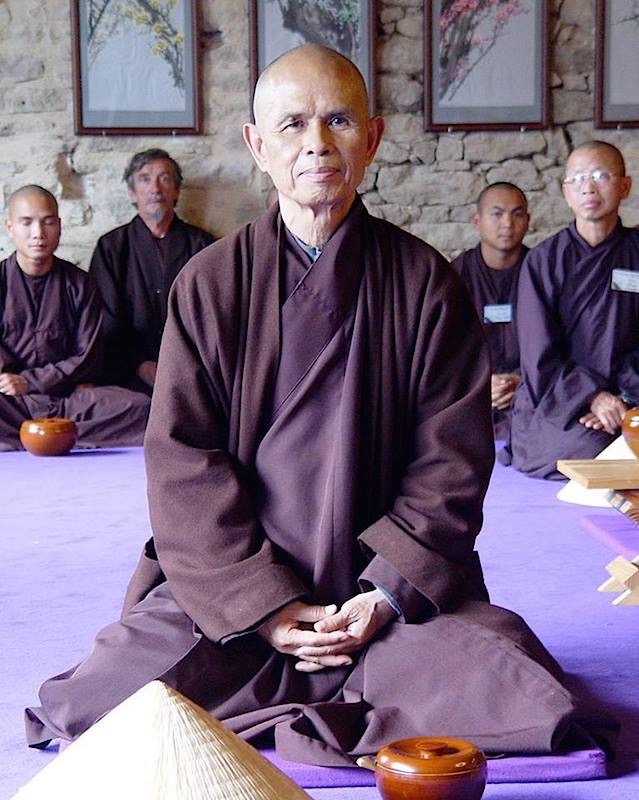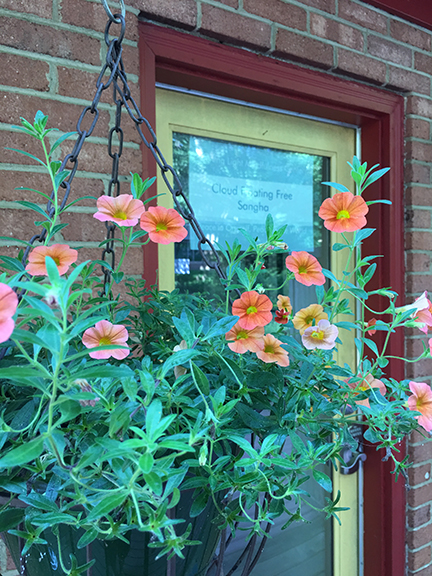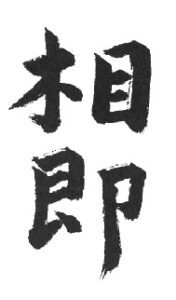by Pam Marraccini | anger, awareness, breathing, Buddha, Buddhist psychology, compassion, concentration, consciouness, deep looking, heart, ignorance, joy, love, meditation, mindfulness, nonduality, seeds, suffering, Thich Nhat Hanh, understanding

Understanding is the fruit of meditation. When we practice deep looking directed toward the heart of reality, we receive understanding, we receive the wisdom that makes us free. If there is deep pain within you, meditate.
Meditating is not trying to run away, trying to ignore the presence of the pain, but on the contrary, it is looking at it face-to-face. You have to practice deep looking directed toward the nature of this pain because for Buddhists, we are joy, but we are also pain; e are understanding, but we are also ignorance. Meditating is not transforming oneself into a battlefield where one side is fighting another, where good fights against evil. This is not Buddhist meditation. Buddhist meditation is based on the principle of non-duality. This means that if we are mindfulness, if we are love, we are also ignorance, we are also suffering, and there is no reason to suppress anything at all.
When the seed of anger manifests on the level of our conscious mind, our immediate awareness, it is because the seed of anger is in the depths of our consciousness, and then we begin to suffer. Our immediate awareness is something like our living room. The task of the meditator is not to chase away or to suppress the energy of anger that is there but rather to invite another energy that will be able to care for the anger.
You can use the method of mindful breathing to make the seed of this other energy grow inside of you. It will then manifest in the form of energy, and this energy will embrace your energy of anger like a mother taking a baby in her arms. Then there is only tenderness, there is no fighting with, or discriminating against, the pain. The purpose of the practice of mindful breathing is to help to give birth to this precious energy called mindfulness and to keep it alive.
… Mindfulness is like a light, enabling concentration to really be there, and that also makes it possible for us to look deeply into the heart of things. From this looking deeply is born deep vision, understanding. Mindfulness brings concentration, understanding, love and freedom.
…when the energy of compassion and love touches us, healing establishes itself.
In Buddhism, we say that mindfulness is the energy of the Buddha. The seed of mindfulness is the baby Buddha that is in us. This precious seed can be buried very deeply under several layers of suffering and ignorance. We begin by looking for, by touching this seed of mindfulness, and everybody knows that all of us have this precious seed in us.
When you drink water, if you are aware of the fact that you are drinking water, mindfulness is there. Mindfulness is the energy that makes it possible for us to be aware of what is happening in the present moment.
When you breathe in and you are aware that you are breathing in, mindfulness is there. Mindfulness is always mindfulness of something. When you are angry and yu know that you are angry, mindfulness is there. Anger is one energy, mindfulness is another, and this second kind of energy arises in order to care for the first like a mother caring for her baby.
by Pam Marraccini | afflictions, anger, awareness, Buddha, ignorance, mental formation, mind consciousness, understanding
 In Buddhist psychology, the word samyojana refers to internal formations, fetters or knots. When someone says something unkind to us, for example, if we do not understand why he said it and we become irritated, a knot will be tied in us. The lack of understanding is the basis for every internal knot. It is difficult for our mind to accept that it has negative feelings like anger, fear, and regret, so it finds ways to bury these in remote areas of our consciousness. We create elaborate defense mechanisms to deny their existence, but these problematic feelings are always trying to surface. If we practice mindfulness, we can learn the skill of recognizing a knot the moment it is tied in us, so that the work of untying them will be easy. Otherwise, they will grow tighter and stronger.
In Buddhist psychology, the word samyojana refers to internal formations, fetters or knots. When someone says something unkind to us, for example, if we do not understand why he said it and we become irritated, a knot will be tied in us. The lack of understanding is the basis for every internal knot. It is difficult for our mind to accept that it has negative feelings like anger, fear, and regret, so it finds ways to bury these in remote areas of our consciousness. We create elaborate defense mechanisms to deny their existence, but these problematic feelings are always trying to surface. If we practice mindfulness, we can learn the skill of recognizing a knot the moment it is tied in us, so that the work of untying them will be easy. Otherwise, they will grow tighter and stronger.
by Pam Marraccini | compassion, happiness, ignorance, inner child, listening, present, suffering, Thich Nhat Hanh, understanding, wisdom, wounded child
by Thich Nhat Hanh
INTRODUCTION
The Child Within
In each of us there is a young, suffering child. We all have had times of difficulty as children and many of us have experienced trauma. To protect and defend ourselves against future suffering, we often try to forget those painful times. Every time we’re in touch with the experience of suffering, we believe we can’t bear it, and we stuff our feelings and memories deep down in our unconscious mind. It may be that we haven’t dared to face this child for many decades.
But just because we may have ignored the child doesn’t mean she or he isn’t there. The wounded child is always there, trying to get our attention. The child says, “I’m here. I’m here. You can’t avoid me. You can’t run away from me.” We want to end our suffering by sending the child to a deep place inside, and staying as far away as possible. But running away doesn’t end our suffering; it only prolongs it.
The wounded child asks for care and love, but we do the opposite. We run away because we are afraid of suffering. The block of pain and sorrow in us feels overwhelming. Even if we have time, we don’t come home to ourselves. We try to keep ourselves constantly entertained – watching television or movies, socializing, or using alcohol or drugs – because we don’t want to experience that suffering all over again.
The wounded child is there and we don’t even know she is there. The wounded child in us is a reality, but we can’t see her. That inability to see it is a kind of ignorance. This child has been severely wounded. She or he really needs us to return. Instead we turn away.
Ignorance is in each cell of our body and our consciousness. It’s like a drop of ink diffused in a glass of water. That ignorance stops us from seeing reality; it pushes us to do foolish things that make us suffer even more, and that wound again the already wounded child in us.
The wounded child is also in each cell of our body. There is no cell of our body that does not have that wounded child in it. We don’t have to look far into the past for that child. We only have to look deeply and we can be in touch with him. The suffering of that wounded child is lying inside us right now in the present moment.
But just as the suffering is present in every cell of our body, so are the seeds of awakened understanding and happiness handed down to us from our ancestors. We just have to use them. We have a lamp inside us, the lamp of mindfulness, which we can light anytime. The oil of that lamp is our breathing, our steps, and our peaceful smile. We have to light up that lamp of mindfulness so the light will shine out and the darkness will dissipate and cease. Our practice is to light up the lamp.
When we become aware that we’ve forgotten the wounded child in ourselves, we feel great compassion for that child and begin to generate the energy of mindfulness. The practices of mindful walking, mindful sitting, and mindful breathing are our foundation. With our mindful breath and mindful steps, we can produce the energy of mindfulness and return to the awakened wisdom lying in each cell of our body. That energy will embrace us and heal us, and we will heal the wounded child in us.
Listening
When we speak of listening with compassion, we usually think of listening to someone else. But we must also listen to the wounded child inside of us. Sometimes the wounded child in us needs all our attention, That little child might emerge from the depths of your consciousness and ask for your attention. If you are mindful, you will hear his or her voice calling for help. At that moment, instead of paying attention to whatever is in front of you, go back and tenderly embrace the wounded child. You can talk directly to the child with the language of love, saying, “In the past, I left you alone. I went away from you. Now, I am very sorry. I am going to embrace you.” You can say, “Darling, I am here for you. I will take good care of you. I know that you suffer so much. I have been so busy. I have neglected you, and now I have learned a way to come back to you.” If necessary, you have to cry together with the child. Whenever you need to, you can sit and breathe with the child. “Breathing in, I go back to my wounded child; breathing out, I take good care of my wounded child.”
You have to talk to your child several times a day. Only then can healing take place. Embracing your child tenderly, you reassure him that you will never let him down again or leave him unattended. The little child has been left alone for so long. That is why you need to begin this practice right away. If you don’t do it now, when will you do it?
If you know how to go back to her and listen carefully every day for five or ten minutes, healing will take place. When you climb a beautiful mountain, invite your child within to climb with you. If you do that for a few weeks or a few months, the wounded child in you will experience healing.
With practice, we can see that our wounded child is not only us. Our wounded child may represent several generations. Our mother may have suffered throughout her life. Our father may have suffered. Perhaps our parents weren’t able to look after the wounded child in themselves. So when we’re embracing the wounded child in us, we’re embracing all the wounded children of our past generations. This practice is not a practice for ourselves alone, but for numberless generations of ancestors and descendants.
Our ancestors may not have known how to care for their wounded child within, so they transmitted their wounded child to us. Our practice is to end this cycle. If we can heal our wounded child, we will not only liberate ourselves, but we will also help liberate whoever has hurt or abused us. The abuser may also have been the victim of abuse. There are people who have practiced with their inner child for a long time who have had a lessening of their suffering and have experienced transformation. Their relationships with their family and friends have become much easier.
We suffer because we have not been touched by compassion and understanding. If we generate the energy of mindfulness, understanding and compassion for our wounded child, we will suffer much less. When we generate mindfulness, compassion and understanding become possible, and we can allow people to love us. Before, we may have been suspicious of everything and everyone. Compassion helps us to relate to others and restore communication.
The people around us, our family and friends, may also have a severely wounded child inside. If we’ve managed to help ourselves, we can also help them. When we’ve healed ourselves, our relationships with others become much easier. There’s more peace and more love in us.
Go back and take care of yourself. Your body needs you, your feeling need you, your perceptions need you. The wounded child in you needs you. Your suffering needs you to acknowledge it. Go home and be there for all these things. Practice mindfulness so you can really be there, so you can love.



